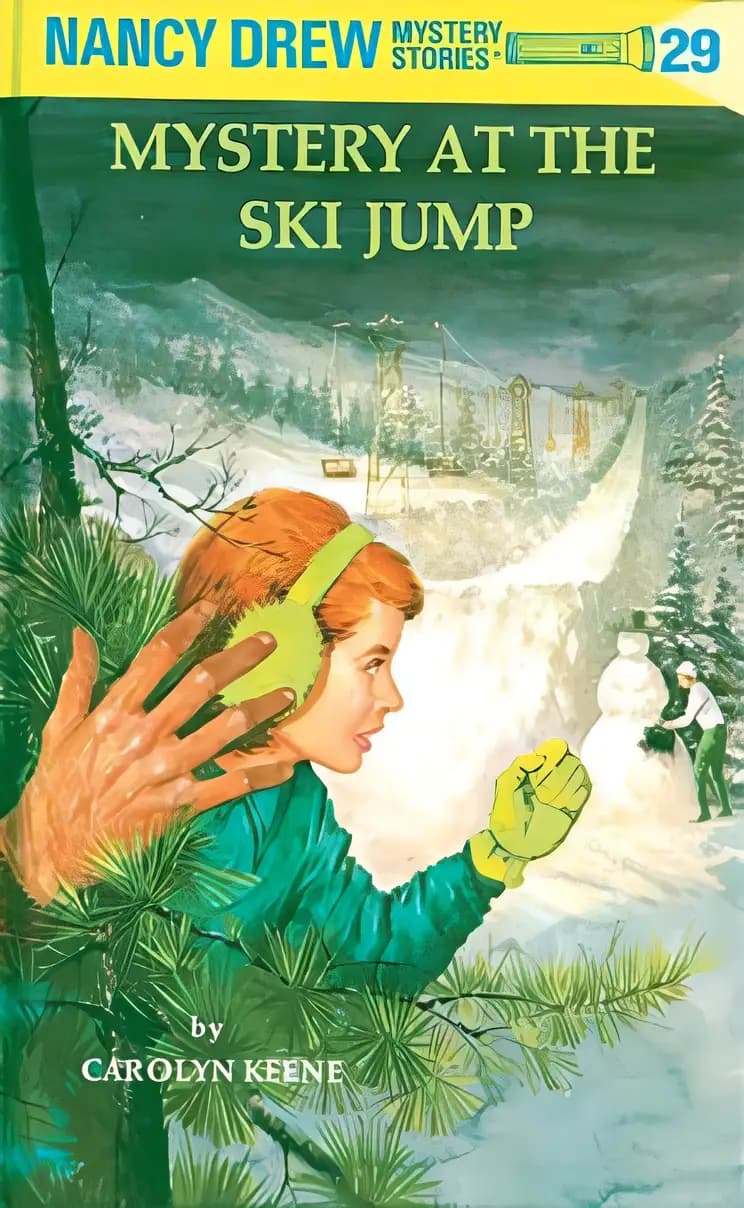The Mystery at the Ski Jump
#29 of 163 in Nancy Drew Series
on Goodreads (5,731)
What’s inside...
Nancy Drew becomes embroiled in two thrilling cases involving a hit-and-run incident and an international jewel thief using her identity to swindle people. She navigates through an intricate web of intrigue to uncover the truth behind the crimes, all while being suspected by the police herself. Join Nancy as she clears her name and brings the criminals to justice in these dangerous and exciting mysteries. When Nancy learns the Drews’ housekeeper has been duped by an elegantly dressed woman into buying a stolen fur piece, the young detective starts a search for the clever swindler. To Nancy’s astonishment, she discovers the woman is using the name Nancy Drew! The dishonest acts of the impostor point the finger of suspicion at Nancy herself! Following the trail of the clever fur thieves and stock swindlers to New York and into Canada, Nancy is tireless in her quest for justice, determined to clear her good name! This book is the revised text. The plot of the original story (©1952) is similar with minor revisions.
Character compass
Nancy Drew
George Fayne
Bess Marvin
Carson Drew
Mitzi Channing
Ned Nickerson
Hannah Gruen
Chief McGinnis
Burt Eddleton
Dunstan Lake
Sidney Boyd
Judge Hartgrave
R.I. Channing
Mrs. Martin (Nancy Drew)
Eloise Drew
Discussion points
What do you think Nancy learned about trust and friendship in 'The Mystery at the Ski Jump'?
How did the setting at the ski jump add suspense to the story?
Why is it important for Nancy to solve mysteries, and what does that teach us about problem-solving and determination?
How do the different characters in the book contribute to the resolution of the mystery?
If you were in Nancy's shoes, how would you handle the challenges she faced?
Tip: Role play these questions
Encourage your child to imagine themselves in the snowy setting of the book and ask how they would feel exploring it.
Discuss with your child the importance of perseverance, as shown by Nancy, and relate it to personal experiences or challenges they might face.
Highlight the significance of friendships in solving problems and ask your child about times when their friends helped them, or they helped others.
Explore the emotions of various characters at key points in the story, and ask your child how they would feel in similar situations.
Key lessons
Example Lesson: The importance of teamwork
Explanation: In 'The Mystery at the Ski Jump,' Nancy Drew collaborates with her friends to solve the mystery, demonstrating how teamwork can lead to success.
Real-World Application: Children can learn to work cooperatively in group settings, such as school projects or sports, understanding that collective efforts often yield better results.
Example Lesson: Critical thinking and problem-solving
Explanation: Throughout the book, Nancy uses her detective skills to piece together clues. This showcases how logical reasoning and critical thinking are vital in solving problems.
Real-World Application: Kids can apply critical thinking to academic challenges, personal dilemmas, or puzzles, enhancing their decision-making process and independence.
Example Lesson: Perseverance in the face of challenges
Explanation: Nancy faces various obstacles in her quest to solve the mystery, but she remains determined and does not give up, illustrating the value of persistence.
Real-World Application: This teaches children to stay determined and persist through difficulties in their studies, relationships, or personal goals.
Example Lesson: Ethics and integrity
Explanation: Nancy demonstrates honesty and moral judgment when making decisions during her investigation, reinforcing the importance of integrity.
Real-World Application: Children learn the significance of honesty and ethics in their daily interactions and the long-term benefits of being trustworthy.
Example Lesson: Curiosity and lifelong learning
Explanation: Nancy's continuous quest for knowledge and truth in solving mysteries shows the benefits of staying curious and engaged in learning.
Real-World Application: Encourages children to explore new subjects, ask questions, and pursue learning not just in school but as a continuing personal habit.
